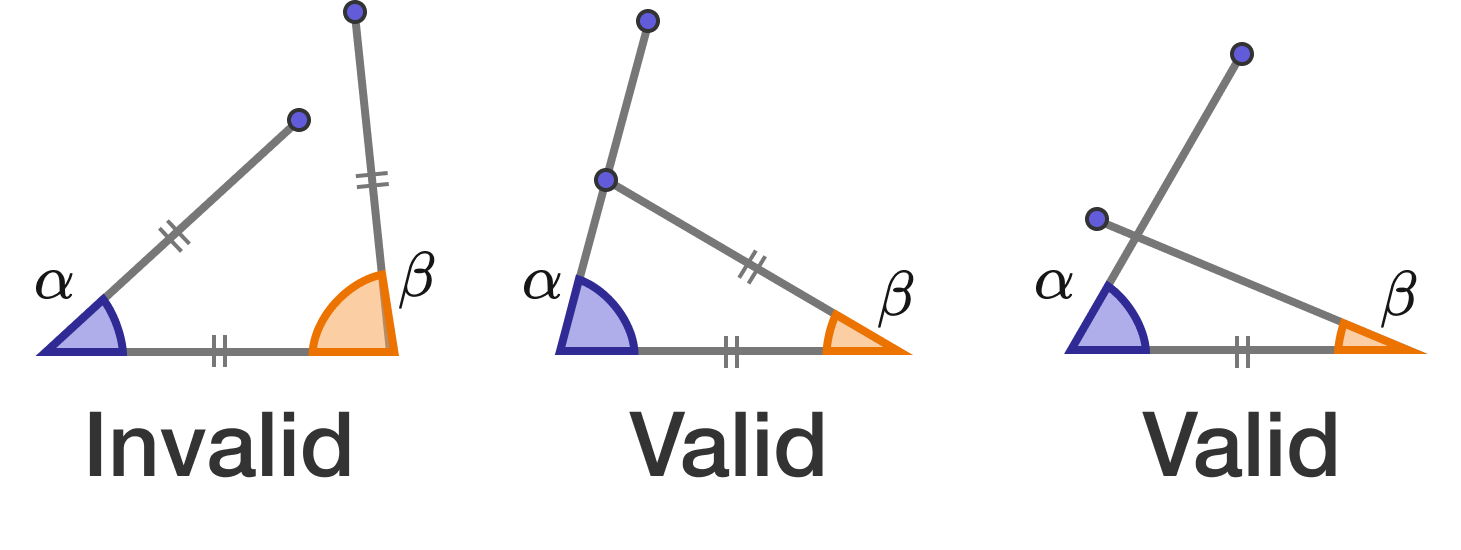Anchoring Angles
There are 3 congruent segments, 2 of which each have a blue point on one end.
Now, as shown in the diagram, the 3 segments are joined such that only the 2 blue ends can freely move at random, forming a triangle sometimes or failing to form one some other times, depending on the angles and
What is the probability that two angles enclose a triangle, as illustrated by the latter two cases marked "valid"?

This section requires Javascript.
You are seeing this because something didn't load right. We suggest you, (a) try
refreshing the page, (b) enabling javascript if it is disabled on your browser and,
finally, (c)
loading the
non-javascript version of this page
. We're sorry about the hassle.
By symmetry, we can assume that α ≤ π . For α ≤ 3 π we want β ≤ 2 π − α and for 3 π ≤ α ≤ 2 π we want β ≤ π − 2 α , as illustrated in the left "Valid" figure above. Thus the probability we seek is 2 π 2 π 2 / 6 = 1 2 1 .